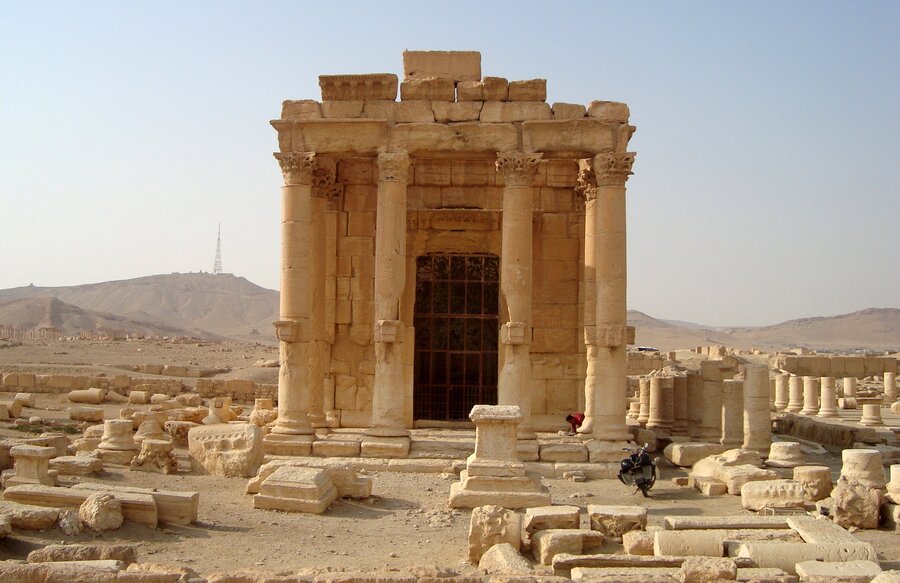ISIS recaptures Palmyra: A fresh assault on heritage sites?
Militants from the self-proclaimed Islamic State captured most of Palmyra on Saturday, nine months after they were driven from the city by a combination of Syrian and Russian forces.
The city’s fall followed the ISIS seizure of several key government positions, oil fields and strategic hilltops over the course of a three-day campaign, and sparked concern for the well-being of civilians in a city where much of the population supports the Syrian government. One Turkey-based activist told the Associated Press that government soldiers were fleeing the city.
“The army as an institution has dissolved,” he said, adding that about 120 families had not been able to leave. "There is strong fighting on all sides," he told the AP. "There is no exit except through a corridor to the west."
The capture of Palmyra poses a setback to the US-allied coalition in a city that has particular historical and symbolic resonance. During their 10-month rule over the town, ISIS militants embarked upon a fit of iconoclasm, destroying several of Palmyra’s famed world heritage sites, including two temples dating back nearly 2,000 years and a Roman archway, and executing the city’s archeological director.
After ISIS was driven from the city, one Syrian government general proclaimed it a “fatal blow to Daesh” that would “usher in the start of its defeat and retreat”, as the AP reported at the time. A few months later, the Russian government staged a classical music concert in the city’s Roman amphitheater in celebration of the victory.
The destruction of historical sites also spurred digital archeology projects dedicated to restoring virtual versions of the city’s lost treasures, as The Christian Science Monitor’s Dominique Soguel reported in November 2015:
By drawing on architectural plans, data, and photographs collected from contributors across the world, the project hopes to reconstruct what has been destroyed in Palmyra. The UNESCO World Heritage site has been targeted in recent months by IS as part of its systematic destruction of competing cultures’ relics in its self-declared “caliphate.”
“We are not only taking this idea of constructing a new virtual Palmyra as a hard science project,” says Barry Threw, interim director of New Palmyra, the open-source platform dedicated to rebuilding the ancient city. “It is also a community-building project, to get people together around this idea of reconstructing a new virtual site while IS has been actively deleting the culture and history physically.”
The ISIS retaking of Palmyra also follows a counterattack in the city of Mosul that left 20 Iraqi soldiers killed, slowing the advance of Iraqi special forces upon the city, the largest held by the militant group. And on Saturday, US Defense Secretary Ash Carter announced that the Pentagon would send an additional 200 US troops to Syria as part of a campaign to retake Raqqa, the de facto capital of IS.
"These uniquely skilled operators will join the 300 US special operations forces already in Syria, to continue organizing, training, equipping, and otherwise enabling capable, motivated, local forces to take the fight to ISIL," Carter told the AP. "By combining our capabilities with those of our local partners, we've been squeezing ISIL by applying simultaneous pressure from all sides and across domains, through a series of deliberate actions to continue to build momentum."
This report contains material from the Associated Press.






